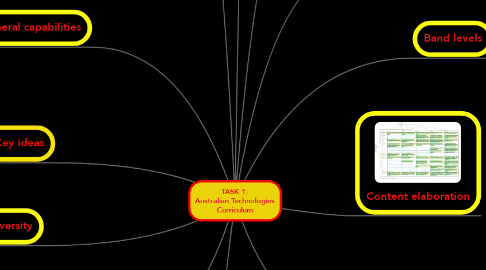
1. Curriculum aims and objectives
1.1. Design and Technologies
1.1.1. Document design ideas and communicate these to a range of audiences.
1.1.2. Select and manipulate a range of materials, components, tools and equipment creatively and safely in the development of designed solutions suitable for a range of technologies contexts.
1.1.3. Explore, investigate, create and critique innovative, ethical and sustainable technologies.
1.1.4. Develop confidence and critical users and designers and producers of technologies and designed solutions.
1.1.5. Understand the roles and responsibilities of designers, technologists and those in related occupations.
1.2. Digital Technologies
1.2.1. Frame problems and create solutions using the computational thinking concepts of abstraction; data collection, representation and interpretation; specification, algorithms and implementation; digital systems; and interactions and impact.
1.2.2. Design, create, manage and evaluate sustainable digital solutions to meet and redefine current and future needs of individuals, societies, economies and environments.
1.2.3. Use digital systems to efficiently and effectively automate the transformation of data into information and to creatively communicate ideas in a range of formal and informal settings.
1.2.4. Apply protocols and legal practices that support safe, ethical and respectful communications and collaboration with known and unknown audiences when developing social and intellectual capital.
1.2.5. Monitor, analyse, predict and shape the interactions within and between information systems and the impact on individuals, societies, economies and environments.
2. General capabilities
2.1. Capabilities that comprise of knowledge, skills and behaviours to help students live and work within the twenty first century.
2.1.1. Literacy (LIT)
2.1.2. Numeracy (NUM)
2.1.3. Information and communication technology (ICT) capability
2.1.4. Critical and creative thinking (CCT)
2.1.5. Personal and social capability (PSC)
2.1.6. Ethical Understanding (EU)
2.1.7. Intercultural understanding (ICU)
3. Key concepts
3.1. Abstraction
3.2. Data collection
3.3. Specification
3.4. Digital systems
3.5. Interactions
4. Subjects
4.1. Design and Technologies
4.2. Digital Technologies
5. Student diversity
5.1. Many students have or come from diverse backgrounds with varied needs which include:
5.1.1. Students with a disability
5.1.2. English as an additional language or dialect
5.1.3. Gifted and talented students
6. Key ideas
6.1. Creating preferred futures
6.2. Project management
7. Strands
7.1. These strands are present in each subject
7.1.1. Knowledge and Understanding
7.1.2. Processes and Production Skills
8. Cross-curriculum priorities
8.1. There are three cross curriculum priorities within the Australian Curriculum which include;
8.1.1. Aboriginal and Torres Strait Islander histories and cultures
8.1.2. Asia and Australia's engagement with Asia
8.1.3. Sustainability
8.1.3.1. This cross curriculum priority is used within the two subjects of the Technologies Curriculum.
